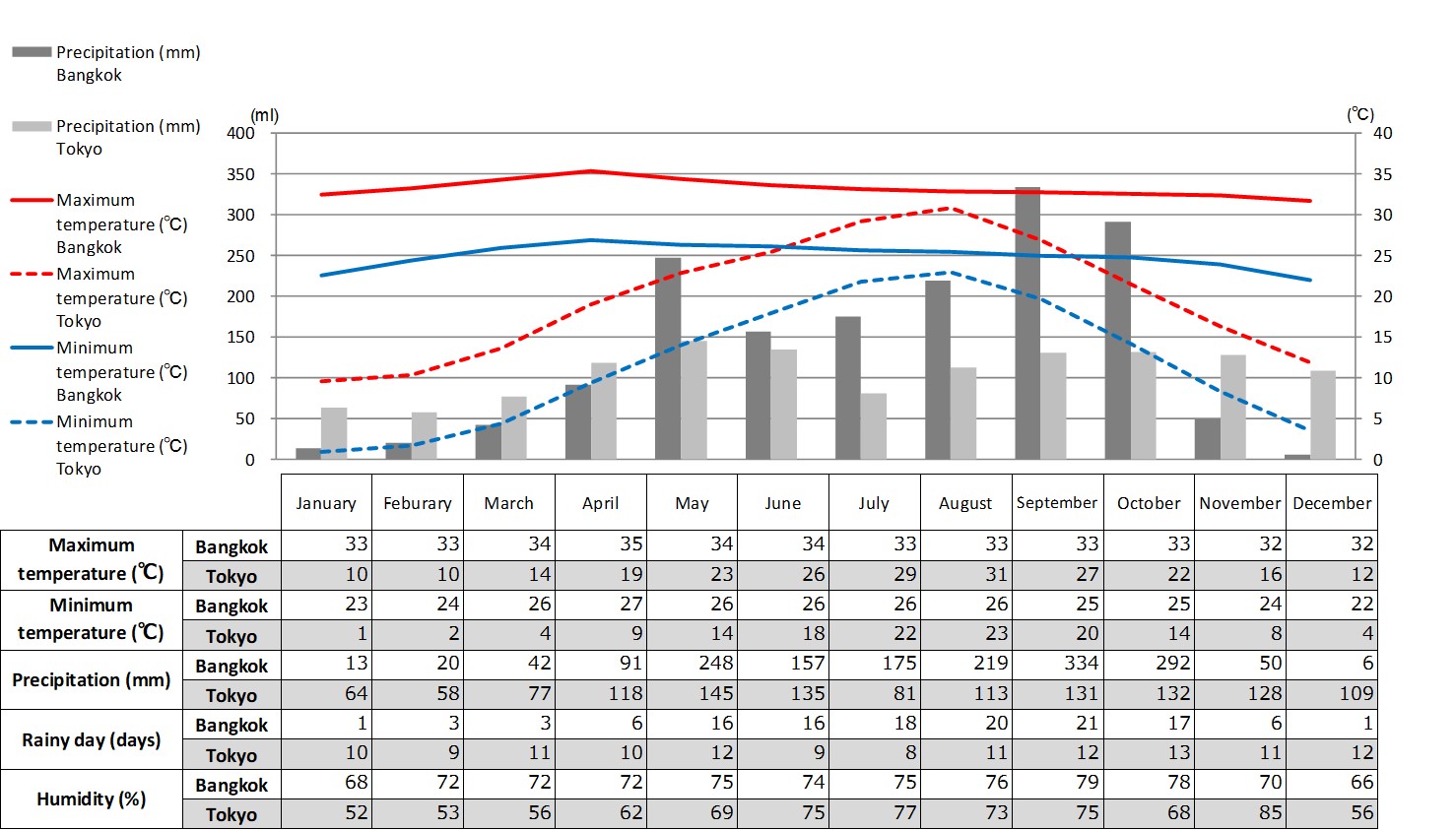Maximum and minimum temperatures, precipitation, number of days with rain, and humidity for Bangkok and Tokyo
It is hot, humid and muggy, and can be considered the climate of midsummer in Japan throughout the year. There are three main seasons: the dry season (November to March), the hot season (April to May), and the rainy season (June to October).
In the dry season, there is almost no rainfall and the temperature is slightly lower than in the other seasons. The hot season when Songkrang (water festival), the Thai Lunar New Year, is celebrated is the hottest season of the year, with strong sunshine and continuous hot and humid weather. The hottest month of the hot season is April. Rainfall is light, but squalls can occur. The rainy season is the highest rainfall season of the year, but it rarely lasts all day like the rainy season in Japan, with heavy squalls of about an hour or two every day. After the rain, it is cooler.
The weather is hot and humid with strong sunshine throughout the year, so it is best to wear airy clothes. Some department stores, hotels and restaurants are overly air-conditioned, so you may want to bring a piece of clothing to put on. During the rainy season (green season), squalls can occur, so a folding umbrella or raincoat is useful.
Maximum and minimum temperatures, precipitation, number of days with rain, and humidity for Bangkok and Tokyo

Tokyo's climate
Weather Altas "Monthly weather forecast and climate Tokyo, Japan"
Retrieved June 5, 2020, from https://bit.ly/3dBbSTF
Bangkok's climate
Weather Altas "Monthly weather forecast and climate Bangkok, Thailand"
Retrieved June 9, 2020, from https://bit.ly/3h4BQ4l
Comment
Tourism Authority of Thailand, "Amazing Thailand"
Retrieved July 27, 2020, from https://bit.ly/2CSydPp
- Climate and Environment
- 8344 Views
 Global Market Surfer
Global Market Surfer CLP
CLP



